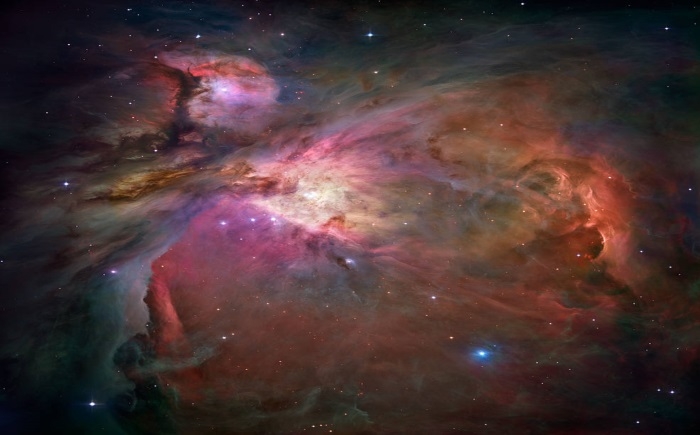NASA’s SOFIA lifted the veil on star formation

This is astonishing because until now, scientists thought that other processes, such as exploding stars called supernovas, were largely responsible for regulating the formation of stars. But SOFIA’s observations propose that infant stars generate stellar winds that can blow away the seed material required to form new stars, a process called “feedback.”
Fortunately, infrared light can pierce through this cloudy veil, allowing specialized observatories like SOFIA to reveal many of the star-formation secrets that would otherwise remain hidden.
“The wind is responsible for blowing an enormous bubble around the central stars,” explained Cornelia Pabst, a Ph.D. student at the University of Leiden in the Netherlands and the lead author on the paper. “It disrupts the natal cloud and prevents the birth of new stars.”
These results were reported in the January 7, 2019 issue of the journal Nature.
The powerful wind from the newly formed star at the heart of the Orion Nebula is creating the bubble (black) and preventing new stars from forming in its neighborhood. At the same time, the wind is pushing molecular gas (color) to the edges, creating a dense shell around the bubble where future generations of stars can form. Understanding how star formation interacts with the interstellar medium is key to understanding the origins of the stars we see today, and those that may form in the future.
Orion Nebula, this stellar nursery has been known to many different cultures throughout human history. The nebula is only 1,500 light-years away, making it the closest large star-forming region to Earth and giving it a relatively bright apparent magnitude of 4. Because of its brightness and prominent location just below Orion’s belt, M42 can be spotted with the naked eye, while offering an excellent peek at stellar birth for those with telescopes. It is best observed in January. The nebula is an enormous cloud of dust and gas where vast numbers of new stars are being forged. Its bright, central region is the home of four massive, young stars that shape the nebula. The four hefty stars are called the Trapezium because they are arranged in a trapezoidal pattern. Ultraviolet light unleashed by these stars is carving a cavity in the nebula and disrupting the growth of hundreds of smaller stars.
SOFIA is a Boeing 747SP jetliner modified to carry a 106-inch diameter telescope. It is a joint project of NASA and the German Aerospace Center, DLR. NASA’s Ames Research Center in California’s Silicon Valley manages the SOFIA program, science and mission operations in cooperation with the Universities Space Research Association headquartered in Columbia, Maryland, and the German SOFIA Institute (DSI) at the University of Stuttgart.